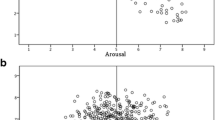Abstract
An end-to-end AV broadcast system providing an immersive, interactive experience for live events is the development aim for the EU FP7 funded project, FascinatE. The project has developed real time audio object event detection and localisation, scene modelling and processing methods for multimedia data, which will allow users to navigate the event by creating their own unique user-defined scene. As part of the first implementation of the system a test shoot was carried out capturing a live Premier League football game and methods have been developed to detect, analyse, extract and localise salient audio events from a range of sensors and represent them within an audio scene in order to allow free navigation within the scene. Within this context, this paper describes a procedure for the detection, extraction and localisation of ball-kicks and whistle-blows from the pitch-side microphones used in the broadcast of football and describes a potential audio streaming format for an object-based broadcast.














Similar content being viewed by others
References
Andrews P (2011) The sound of sport: what is real? In: IoA reproduced sound
Barsanti RJ, Tummala M (2003) Wavelet-based time delay estimates for transient signals. In: IEEE Conference on Signals, Systems and Computers
Benesty J (2000) Adaptive eigenvalue decomposition for passive acoustic source localization. J Acoust Soc Am 107(1):384–391
Berkhout A, de Vries D, Vogel P (1993) Acoustic control by wave field synthesis. J Acoust Soc Am 93(5):2764–2778
Bove VM Jr (1995) Object oriented television. SMPTE J 104(12):803–807
Bove VM Jr (1996) Multimedia based on object models: some whys and hows. IBM Syst J 35(3.4):337–348
Carey R, Bell G (1997) The annotated VRML 97 reference manual. Addison-Wesley Professional
Carter GC (1993) Coherence and time delay estimation: an applied tutorial for research, development, test, and evaluation engineers. IEEE Press
Cengarle G, Mateos T, Olaiz N, Arum P (2001) A new technology for the assisted mixing of sport events: application to live football broadcasting. In: 128th Conv. Audio Eng. Soc
Chen SC, Shyu ML, Zhang C, Luo L, Chen M (2003) Detection of soccer goal shots using joint multimedia features and classification rules. In: 4th International Workshop on Multimedia Data Mining (MDM/KDD2003), pp. 36–44
Cheng Z, Tjhung TT (2003) A new time delay estimator based on ETDE. IEEE Trans Signal Process 51(7):1859–1869
Choi S, Cichocki A, Park H-M, Lee S-Y (2005) Blind source separation and independent component analysis: a review. Neural Inf Process Lett Rev 6(1):1–57
Do H, Silverman HF, Yu Y (2007) A real-time SRP-PHAT source location implementation using stochastic region contraction (SRC) on a large-aperture microphone array. In: IEEE International Conference on Acoustics, Speech and Signal Processing, ICASSP 2007
Geier M, Ahrens J, Spors S (2010) Object-based audio reproduction and the audio scene description format. Organised Sound 15(3):219–227
Gerzon MA (1973) Periphony: with-height sound reproduction. J Audio Eng Soc 21(1):2–10
Gerzon MA (1985) Ambisonics in multichannel broadcasting and video. J Audio Eng Soc 33(11):859–871
Grennberg A, Sandell M (1994) Estimation of subsample time delay differences in narrowband ultrasonic echoes using the Hilbert transform correlation. IEEE Trans Ultrason Ferroelectr Freq Control 41(5):588–595
Hoffmann H, Dachselt R, Meissner K (2003) An independent declarative 3D audio format on the Basis of XML. In: 2003 int. conf. on Auditory Display, ICAD
Jakobsson A, Swindlehurst AL, Stoica P (1998) Subspace-based estimation of time delays and Doppler shifts. IEEE Trans Signal Process 46(9):2472–2483
Kim H-G, Moreau N, Sikora T (2006) MPEG-7 audio and beyond: audio content indexing and retrieval. Wiley
Knapp C, Carter G (1976) The generalized correlation method for estimation of time delay. IEEE Trans Acoust Speech Signal Process 24(4):320–327
Kyriakakis C (1998) Fundamental and technological limitations of immersive audio systems. Proc IEEE 86(5):941–951
Lindsay A, Herre J (2001) MPEG-7 and MPEG-7 Audio - an overview. J Audio Eng Soc 49(7/8):589–594
Metz CE (1978) Basic principles of ROC analysis. Semin Nucl Med 8(4):283–298
MPEG (1998) ISO 14496-3 (MPEG-4 Audio) Final Committee Draft. MPEG Document W2203
Peters N (2008) SpatDIF – the spatial sound description interchange format. In: 2008 International Computer Music Conference, ICMC
Pihkala K, Lokki T (2003) Extending SMIL with 3D Audio. In: 2003 int. conf. on Auditory Display, ICAD
Scheirer E, Vaananen R, Huopaniemi J (1999) AudioBIFS: describing audio scenes with the MPEG-4 multimedia standard. IEEE Trans Multimed 1(3):237–250
Schreer O, Feldmann I, Weissig C, Kauff P, Schäfer R (2013) Ultrahigh-resolution panoramic imaging for format-agnostic video production. Proc IEEE 101(1):99–114
Shirley BG, Kendrick P (2006) The clean audio project: digital tv as assistive technology. J Technol Disabil 18(1):31–41
Silverman HF, Yu Y, Sachar JM, Patterson WR III (2005) Performance of real-time source-location estimators for a large-aperture microphone array. IEEE Trans Speech Audio Process 13(4):593–606
Torkkola K (1999) Blind separation for audio signals–are we there yet? In: Workshop on independent component analysis and blind signal separation
Vincent E, Jafari MG, Abdallah SA, Plumbley MD, Davies ME (2005) Blind audio source separation, Tech Report C4DM-TR-05-01
Wang J, Xu C, Chng E, Tian Q (2004) Sports highlight detection from keyword sequences using hmm. In: IEEE International Conference on Multimedia and Expo (ICME’04), pp. 599–602
Watlington JA, Bove VM Jr (1997) A system for parallel media processing. Parallel Comput 23(12):1793–1809
Westner AG (1998) Object-based audio capture: separating acoustically-mixed sounds. Massachusetts Institute of Technology (MIT), US
Zongchuang L, Xingzhao L, Yongtan L (2002) A modified time delay estimation algorithm based on higher order statistics for signal detection problems. 6th IEEE Int. Conf. on Signal Processing
Acknowledgments
This research project work is part of the FascinatE project which has received funding from the European Union’s Seventh Framework Programme (FP7/2007- 2013) under grant agreement no: 248138.
Author information
Authors and Affiliations
Corresponding author
Rights and permissions
About this article
Cite this article
Oldfield, R., Shirley, B. & Spille, J. Object-based audio for interactive football broadcast. Multimed Tools Appl 74, 2717–2741 (2015). https://doi.org/10.1007/s11042-013-1472-2
Published:
Issue Date:
DOI: https://doi.org/10.1007/s11042-013-1472-2




